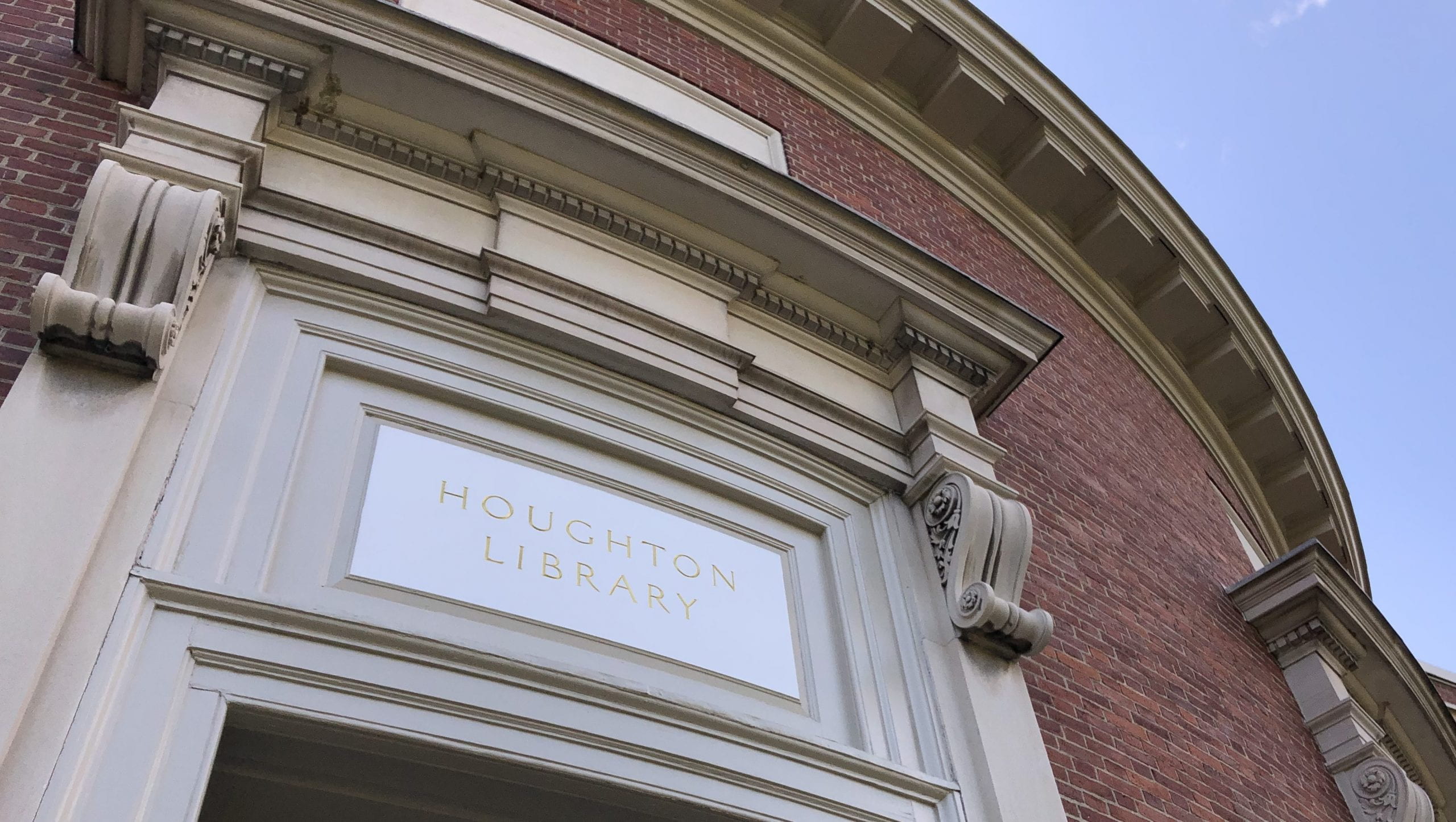Finding aids for 11 newly cataloged collections have been added to the OASIS database this month, including a collection of photos of the dancer and choreographer known as La Meri. Processed by Michael W. Austin: Series X. James family photograph albums in the collection: Correspondence and Journals of Henry James Jr. (MS Am…
April Fun: Peirce’s Puzzler
Riddle: What does a semiotician do for fun? Answer: For your amusement this April Fools’ Day, we offer a rebus from the papers of American philosopher and scientist Charles Sanders Peirce (1839-1914). Peirce (pronounced like “purse”), a scholar of astonishingly wide-ranging interests, was best known in philosophy for his theory of “pragmatism,” but he made many…
Auspicious Debuts: “A captive, but a lion yet”
John Brown’s raid against the federal arsenal at Harpers Ferry, Virginia, on October 16th, 1859, and his subsequent martyrdom elicited an immediate outpouring of abolitionist sentiment across the Northern states. In Columbus, Ohio, twenty-two-year-old William Dean Howells responded with “Old Brown,” his first separately printed work; the poem was soon reprinted in the Ashtabula Sentinel,…
What’s New: Edward Lear Online
Houghton Library holds the largest collection anywhere of original works by the English author and artist Edward Lear (1812-1888). For the past two years the library has been engaged in a project to digitize all this material. The first phase of the endeavor included Lear’s natural history drawings, which were also the subject of an…
Chinua Achebe (1930-2013)
“I speak softly, but I carry a big stick” joked Chinua Achebe when he began his talk at the Christopher Okigbo International Conference at Harvard in 2007. Indeed he did. His debut novel Things Fall Apart, was “hard-hitting” in bringing home to Western readers the African perspective on the social and political consequences of colonial…
What’s New: The Machine that Needed an Artist
The Department of Printing and Graphic Arts recently acquired this hollow-cut silhouette in an oval shape of approximately 3½ x 5”. The inscription below the silhouette identifies the maker as “Williams,” referring to one of the few African-American silhouettists known of the nineteenth century, Moses Williams (1777-ca.1825). An inscription in the same hand on the…
What’s New: Poetry on the line
A story in this week’s Harvard Gazette covers a new exhibition at the Woodberry Poetry Room called PHONE-A-POEM: A Selection of Archival & Newly-Commissioned Answering Machine Poems. Started in 1976 by Cambridge poet Peter Payack, for 25 years Phone-a-Poem offered callers recorded poems from the likes of Allen Ginsberg, Denise Levertov, or Donald Hall. Visitors…
Houghton Visiting Fellowship Recipients, 2013-14
Each year, Houghton awards visiting fellowships to support scholars whose research requires the use of Houghton collections. We are pleased to announce the awarding of 26 fellowships for the 2013-14 fiscal year:…
Auspicious Debuts: Birdwatching with a future president
Theodore Roosevelt is perhaps the most prolific American president, having published over forty books and numerous articles during his life. His very first publication was significantly less august than his later writings: a four-page pamphlet titled The Summer Birds of the Adirondacks in Franklin County, N.Y., co-written with his friend Hal Minot and published in…
What’s New: Videos Highlight Houghton Contributions to Library Lab
Library Lab, a Harvard grant program for funding innovative ideas in libraries, has posted videos about a number of recent projects to YouTube. Three of those projects involve contributions from Houghton staff members: Connecting the Dots is a pilot project using the new archival cataloging standard EAC-CPF to create records for the members of Samuel…
